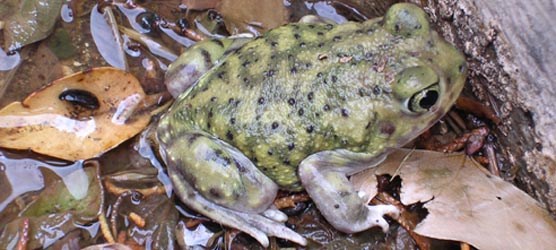
NPS photo Among the park's nine amphibians are two species of spadefoot toads, Couch's spadefoot and New Mexico spadefoot. The spadefoot toads are not true toads, but belong to the primitive family Pelobatidae. Spadefoots resemble true toads (family Bufonidae) in body form, but have smoother, thinner skin. The spadefoots are named for their large, sharp metatarsal tubercles that are used to dig backwards to depths of several feet. Spadefoots are truly adapted to life in a desert, taking advantage of the short-lived ponds created by summer thunderstorms in order to breed. It is believed that sound or vibration of rainfall cues the spadefoots to emerge from underground and congregate at the ponds. Males engage in loud choruses to attract females and rush the breeding process before the ponds disappear. Spadefoots breed quickly in order to take advantage of favorable breeding conditions and to allow the eggs and larvae as much time as possible to develop. The park's list also includes four species of true toads (family Bufonidae); as well as a cricket frog (believed to have been extirpated from the park in recent years) and two species of true frogs, the Rio Grande leopard frog and the non-native American bullfrog. Amphibians Checklist [347k PDF] |
Last updated: May 6, 2025
